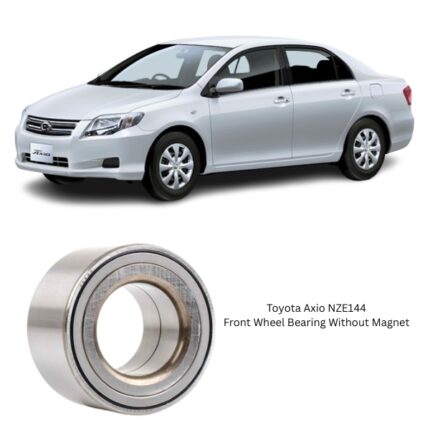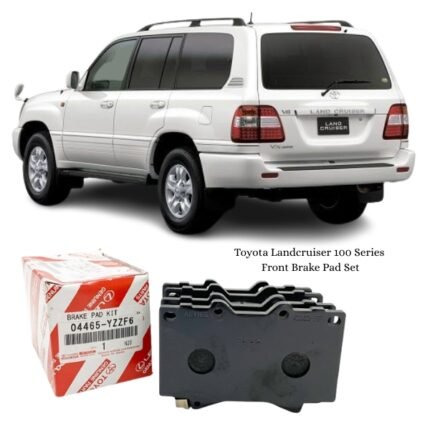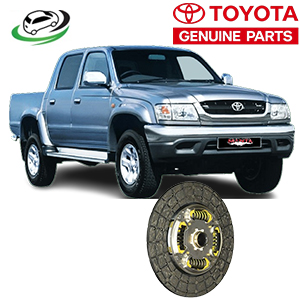Get Toyota Hilux KZN165 3.0L (1KZ-TE) Clutch Disc Assy 31250-0K205
The clutch disc assembly is a crucial component of a vehicle’s manual transmission system, playing a vital role in connecting and disconnecting the engine power from the transmission. It enables smooth gear shifting and ensures efficient power transfer from the engine to the wheels. Understanding the design, function, maintenance, and replacement of the clutch disc assembly is essential for anyone involved in automotive repair or maintenance. This article delves into the intricacies of the clutch disc assembly, exploring its components, working principles, and best practices for maintenance.
1. Overview of the Clutch System
The clutch system in a vehicle serves as a bridge between the engine and the transmission. When the driver depresses the clutch pedal, the clutch system disengages the engine’s power from the transmission, allowing the driver to change gears smoothly. The clutch assembly typically consists of three primary components: the clutch disc, the pressure plate, and the flywheel.
Components of the Clutch Assembly
- Clutch Disc: The clutch disc is the component that engages and disengages the engine power. It is located between the pressure plate and the flywheel.
- Pressure Plate: The pressure plate is bolted to the flywheel and exerts pressure on the clutch disc to engage it when the clutch pedal is released.
- Flywheel: The flywheel is attached to the engine’s crankshaft and provides a mounting surface for the clutch assembly. It helps maintain engine speed and smooth operation.
2. The Role of the Clutch Disc Assembly
The clutch disc assembly is responsible for several key functions in the vehicle’s transmission system:
2.1 Power Transmission
The primary function of the clutch disc is to transmit engine power to the transmission. When the clutch pedal is released, the pressure plate presses the clutch disc against the flywheel, allowing power to flow from the engine to the wheels.
2.2 Smooth Engagement and Disengagement
The clutch disc allows for smooth engagement and disengagement of power. This is essential for changing gears without causing significant disruptions to the vehicle’s motion. A well-functioning clutch disc assembly minimizes jerks and ensures a comfortable driving experience.
2.3 Torque Management
The clutch disc assembly helps manage torque transfer from the engine to the transmission. It allows for gradual application of power, which is crucial for preventing wheel spin and ensuring traction, especially during acceleration.
2.4 Vibration Dampening
Many clutch discs are designed with dampening mechanisms that help absorb vibrations generated by the engine. This reduces noise and enhances driving comfort.
3. Construction of the Clutch Disc
The construction of the clutch disc is vital to its performance and durability. A typical clutch disc assembly consists of the following components:
3.1 Disc Plate
The disc plate is the main body of the clutch disc and is usually made from high-strength materials such as steel or aluminum. It serves as the surface for engagement with the pressure plate and flywheel.
3.2 Friction Material
The friction material is bonded to both sides of the disc plate and is typically made from a composite material or organic compounds. This material is designed to provide sufficient friction to engage and disengage the engine power effectively.
3.3 Dampening Springs
Dampening springs are located within the clutch disc assembly and help absorb shock loads during engagement and disengagement. These springs allow for smoother transitions and minimize wear on the components.
3.4 Center Hub
The center hub is the component that connects the clutch disc to the input shaft of the transmission. It often contains splines that allow it to slide onto the shaft, facilitating easy installation and removal.
4. Types of Clutch Discs
Clutch discs come in various types, each designed for specific applications and performance characteristics:
4.1 Organic Clutch Discs
Organic clutch discs are made from composite materials and are commonly used in everyday vehicles. They offer a good balance of performance, durability, and cost-effectiveness. However, they may not withstand high-performance applications as well as other types.
4.2 Metallic Clutch Discs
Metallic clutch discs are designed for high-performance vehicles and racing applications. They provide excellent heat resistance and can handle higher torque loads but may lead to increased wear on the pressure plate and flywheel due to their aggressive nature.
4.3 Cerametallic Clutch Discs
Cerametallic discs combine ceramic and metallic materials, offering exceptional durability and heat resistance. These are often used in performance vehicles and applications where high torque and heat dissipation are critical.
4.4 Dual-Friction Clutch Discs
Dual-friction clutch discs feature different friction materials on either side, providing a balance between everyday drivability and performance. This type is ideal for modified vehicles that require more grip during acceleration while still offering smooth engagement.
5. Signs of Clutch Disc Wear
Recognizing the signs of clutch disc wear is crucial for preventing further damage to the transmission and ensuring a safe driving experience. Common symptoms of a failing clutch disc include:
5.1 Slipping Clutch
If the clutch slips during acceleration, it may indicate that the friction material has worn down. This can result in a loss of power transfer and decreased performance.
5.2 Difficulty Shifting Gears
A worn clutch disc can cause difficulty when shifting gears, leading to grinding noises or resistance. This symptom indicates that the disc may not be fully engaging or disengaging.
5.3 Unusual Noises
Unusual noises, such as grinding or rattling sounds when the clutch is engaged, can indicate problems with the clutch disc or other components of the clutch assembly.
5.4 Burning Smell
A burning smell when operating the vehicle may indicate that the clutch is overheating due to excessive slipping or improper adjustment.
6. Maintenance of the Clutch Disc Assembly
Proper maintenance of the clutch disc assembly is essential for ensuring its longevity and optimal performance. Here are some best practices:
6.1 Regular Inspections
Regular inspections of the clutch system should be performed to check for signs of wear or damage. This includes inspecting the clutch pedal, linkage, and hydraulic system (if applicable).
6.2 Proper Driving Techniques
Avoiding excessive slipping of the clutch, such as riding the clutch pedal or using it to hold the vehicle on inclines, can significantly extend the life of the clutch disc.
6.3 Timely Replacement
Replacing the clutch disc at the first signs of wear or failure is crucial to preventing further damage to the transmission and other clutch components.
6.4 Use Quality Replacement Parts
When replacing the clutch disc assembly, it is essential to use high-quality parts that meet or exceed OEM specifications. This ensures reliability and performance.
6.5 Bleeding the Hydraulic System
In vehicles equipped with hydraulic clutch systems, bleeding the system periodically can help prevent air from entering the lines, ensuring proper clutch engagement.
7. Replacing the Clutch Disc Assembly
Replacing the clutch disc assembly is a complex process that typically requires mechanical knowledge and tools. Here’s a step-by-step guide to the replacement process:
7.1 Gather Tools and Materials
- Floor jack and jack stands
- Wrench and socket set
- Torque wrench
- Clutch alignment tool
- New clutch disc assembly (including the pressure plate and flywheel if necessary)
7.2 Raise the Vehicle
Use the floor jack to lift the vehicle and secure it on jack stands. Ensure that the vehicle is stable and secure before starting work.
7.3 Remove the Transmission
- Disconnect the battery to prevent electrical shorts.
- Remove the drive shafts or axles if applicable.
- Unbolt the transmission from the engine, ensuring to disconnect any electrical connectors or sensors.
- Carefully lower the transmission to access the clutch assembly.
7.4 Remove the Old Clutch Disc Assembly
- Unbolt the pressure plate from the flywheel, taking care to note the orientation and sequence of bolts.
- Remove the old clutch disc and inspect the flywheel for wear or damage. Resurfacing the flywheel may be necessary for optimal engagement.
7.5 Install the New Clutch Disc Assembly
- Place the new clutch disc onto the flywheel, ensuring it is oriented correctly.
- Use a clutch alignment tool to ensure proper alignment with the input shaft.
- Attach the new pressure plate, ensuring to tighten the bolts in a crisscross pattern to evenly distribute pressure.
7.6 Reassemble the Transmission
- Carefully raise the transmission back into position, ensuring that it aligns with the engine.
- Reattach the transmission bolts and reconnect any electrical connectors.
- Reinstall the drive shafts or axles as necessary.
7.7 Lower the Vehicle and Test
- Lower the vehicle and reconnect the battery.
- Start the engine and test the clutch operation by engaging and disengaging. Ensure smooth shifting through all gears without slipping or grinding.
8. Conclusion
The clutch disc assembly is a vital component of a vehicle’s manual transmission system, ensuring smooth power transfer and effective gear shifting. Understanding its construction, function, maintenance, and replacement procedures is essential for any automotive enthusiast or professional. By recognizing the signs of wear and adhering to proper maintenance practices, drivers can prolong the life of their clutch assembly, enhancing vehicle performance and safety. Whether you’re performing routine maintenance or replacing the clutch disc assembly, knowledge and attention to detail are key to achieving optimal results.
Follow us on Facebook for more parts.




Reviews
Clear filtersThere are no reviews yet.